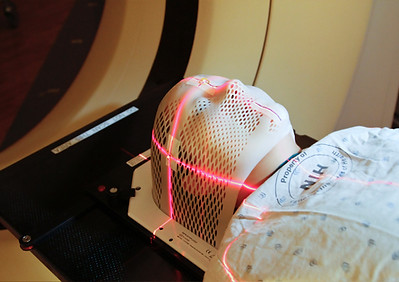
Side Effect of Chemotherapy
Chemotherapy is a widely used cancer treatment that involves the use of powerful drugs to destroy or slow the growth of cancer cells. It works by targeting rapidly dividing cells, a characteristic of cancer, but also affects some healthy cells, leading to side effects.
How Chemotherapy Works
Chemotherapy drugs interfere with cancer cell division and replication. These drugs work in different ways:
-
Damaging DNA – Prevents cancer cells from multiplying.
-
Blocking Cell Growth Signals – Stops tumor growth.
-
Triggering Cell Death (Apoptosis) – Encourages cancer cells to self-destruct.
-
Types of Chemotherapy
-
Curative Chemotherapy – Aims to eliminate cancer completely.
-
Adjuvant Chemotherapy – Given after surgery or radiation to destroy remaining cancer cells.
-
Neoadjuvant Chemotherapy – Used before surgery to shrink tumors.
-
Palliative Chemotherapy – Relieves symptoms and prolongs life in advanced cancer cases.
-
Administration of Chemotherapy
Chemotherapy can be delivered through different methods:
-
Intravenous (IV) – Injected into the bloodstream.
-
Oral (Pills or Capsules) – Taken at home.
-
Topical – Applied to the skin for specific cancers.
-
Intramuscular/Intra-arterial – Injected directly into muscles or arteries near the tumor.
Some Side Effects are -

Febrile Neutropenia (FN) – Increased Risk of Infections
-
Febrile neutropenia is a life-threatening condition where chemotherapy significantly reduces neutrophils (a type of white blood cell), leading to a high risk of infections with fever.
-
Can lead to sepsis (blood infection) if untreated.
Common Chemotherapy Drugs Causing FN
-
Cyclophosphamide
-
Doxorubicin
-
Carboplatin
-
Paclitaxel
-
Methotrexate
Severe Anemia – Low Red Blood Cell Count
-
Chemotherapy damages bone marrow, leading to a drop in red blood cells, causing severe fatigue, shortness of breath, and dizziness.
Common Chemotherapy Drugs Causing Anemia
-
Cisplatin
-
Carboplatin
-
Fluorouracil (5-FU)
-
Vinblastine


Thrombocytopenia – Low Platelet Count (Bleeding Tendency)
-
Chemotherapy suppresses platelet production, leading to bruising, bleeding gums, nosebleeds, or internal bleeding.
Common Chemotherapy Drugs Causing Thrombocytopenia
-
Carboplatin
-
Gemcitabine
-
Doxorubicin
-
Cytarabine
Cardiotoxicity – Heart Damage
-
Certain chemotherapy drugs can weaken the heart muscle, leading to heart failure, irregular heartbeats (arrhythmia), or cardiomyopathy.
Common Chemotherapy Drugs Causing Cardiotoxicity
-
Doxorubicin (Adriamycin) – Causes irreversible heart damage with high doses.
-
Trastuzumab (Herceptin) – Causes reversible heart dysfunction.
-
5-Fluorouracil (5-FU) – Can cause heart spasms (coronary vasospasm).
-
Cisplatin – Can lead to high blood pressure and heart attack risk.


Hepatotoxicity – Liver Damage
-
Some chemotherapy drugs can cause liver inflammation, fatty liver, or liver failure
-
Common Chemotherapy Drugs Causing Hepatotoxicity
-
Methotrexate (Long-term use can cause fibrosis & cirrhosis).
-
Dactinomycin
-
Cytarabine
-
Busulfan

-
Bladder Inflammation and Bleeding.
-
Chemotherapy Drugs:
-
Cyclophosphamide
-
Ifosfamide
-
Mechanism: Toxic metabolites (acrolein) accumulate in the bladder, causing irritation.
-
Complications: Bladder fibrosis, kidney damage.
Hemorrhagic Cystitis

Hand-Foot Syndrome (Palmar-Plantar Erythrodysesthesia)
-
Painful redness, swelling, and peeling of the hands and feet.
-
Chemotherapy Drugs:
-
5-Fluorouracil (5-FU)
-
Capecitabine
-
Doxorubicin
-
Mechanism: Drug leakage from small blood vessels into skin tissues.
-
Complications: Painful blisters, skin peeling.
Chemotherapy-Induced Peripheral Neuropathy (CIPN)
-
Nerve damage leading to tingling, numbness, or weakness.
-
Chemotherapy Drugs:
-
Cisplatin
-
Oxaliplatin
-
Vincristine
-
Paclitaxel


Radiation Recall Syndrome
-
Severe skin reactions (redness, swelling, peeling) at previous radiation sites when chemotherapy is given later.
-
Chemotherapy Drugs:
-
Doxorubicin
-
Paclitaxel
-
Gemcitabine
Tumor Lysis Syndrome (TLS)
-
Metabolic disorder due to rapid tumor breakdown.
-
Chemotherapy Drugs:
-
Rituximab
-
Methotrexate
-
Cytarabine
-
Mechanism: Sudden release of uric acid, potassium, and phosphorus from dying tumor cells, leading to kidney failure and heart arrhythmias.


Posterior Reversible Encephalopathy Syndrome (PRES)
-
Brain swelling causing seizures, confusion, and vision loss.
-
Chemotherapy Drugs:
-
Cisplatin
-
Bevacizumab
-
Cyclosporine
-
Mechanism: Chemotherapy-induced high blood pressure leads to brain swelling.
Secondary Malignancies (Therapy-Related Cancers)
-
Development of new cancers (Leukemia, Lymphoma, etc.) after chemotherapy.
-
Chemotherapy Drugs:
-
Cyclophosphamide (Leukemia)
-
Etoposide (Acute Myeloid Leukemia - AML)
-
Doxorubicin (Sarcoma, Leukemia)
-
Mechanism: DNA damage from chemotherapy leads to genetic mutations.

-
Chemotherapy is life-saving but can lead to serious syndromes and diseases affecting multiple organs. Awareness and early management of these complications are crucial.
-
Ayurveda provides a holistic approach to managing chemotherapy side effects through:
✅ Herbs and formulations to strengthen immunity and reduce toxicity.
✅ Dietary modifications to support digestion, liver, and kidney function.
✅ Yoga and meditation to improve mental and physical well-being. -
Integrating Ayurveda with modern cancer treatment under medical supervision can significantly enhance quality of life, reduce chemotherapy toxicity, and promote faster recovery.
